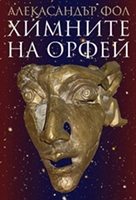
- Обем: 109 стр.
- Формат в мм: 145х200
- Дата на включване: 29-03-2002
- ISBN:
- Категория: История и Археология
- Издател: АИ "Проф. Марин Дринов"
-
Меки корици
Great Preslav
Анотация
The systematic archaeological excavations having been carried out for over 100 years now on the large territory of the Bulgarian second capital Veliki Preslav led to the discovery of a considerable number of monuments and materials that, explained correctly, illuminate many important aspects of the life and culture of the First Bulgarian Kingdom. To review and analyse in detail all results within the framework of a study like the present one is difficult, and even impossible. Therefore, prevalence is given to the newly found monuments that provide mainly evidence for elucidating some of the issues that are still not entirely solved concerning the emergence of the city of Veliki Preslav and the stages of its development.
According to the archaeological excavations, three periods can be distinguished in the past of Veliki Preslav: a pre-capital one, a capital and a post-capital one that are unevenly clarified by the archaeological material. Most numerous and expressive are the monuments associated with the capital period of the city (893 -971). This was the time when Veliki Preslav, apart from functioning as the administrative, state and military centre of Bulgaria, was a focus of intense and diversified cultural life. The heights that were reached by crafts, arts and literature in the city actually determine the image and the features of early Bulgarian culture and are clearly indicative of the large potential of the old Bulgarian masters, men of letters and painters. With its solid defense system, with its richly built palaces and churches, with its numerous workshops and ateliers, baths, water conduits and with the magnificence and wealth of its monuments made according to various artistic techniques, Veliki Preslav is an independent creative centre of Old Bulgarian mate-rial and spiritual culture during the 9th - 10th centuries.
Today we know about the precapital past of Veliki Preslav thanks to the many new data acquired during archaeological investigations. Some of the latest results enabled the rather convincing reconstruction of the picture of the emergence of the city from a settlement near a military fortress {aid}, such as was evidenced by the terrace on which the palace centre of the capital later stood. Whereas there are many data available about the aul and it has been known for several years now how its enlargement from the north was accomplished and how its centre was partly shaped at the end of the 9th century in connection with the proclamation of the city as the capital of Bulgaria, concerning the emergence of its early settlement very little has been established so far.
With the construction by the state authorities of a military fortification or an aul in the proximity of the settlement in the first two or three decades of the 9th century, changes started to occur on the terrace, that had a profound impact on all aspects of the life of the city. Transformations in the defense system and the town structure started to take place, the way of life of the inhabitants changed, its economy flourished. All this led to the choice and proclamation of the settlement as the capital of the state at the end of the 9th century and to its transformation in the 10th century into a great centre of multifarious material and spiritual culture whose high achievements and brilliant manifestations s haped the phenomenon of the Preslav civilization.


